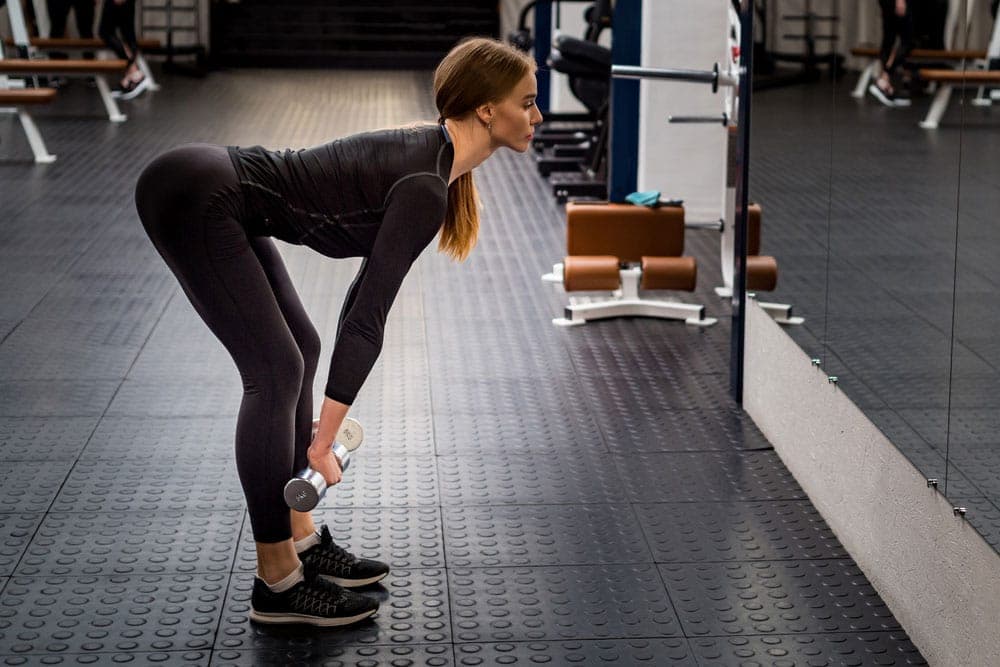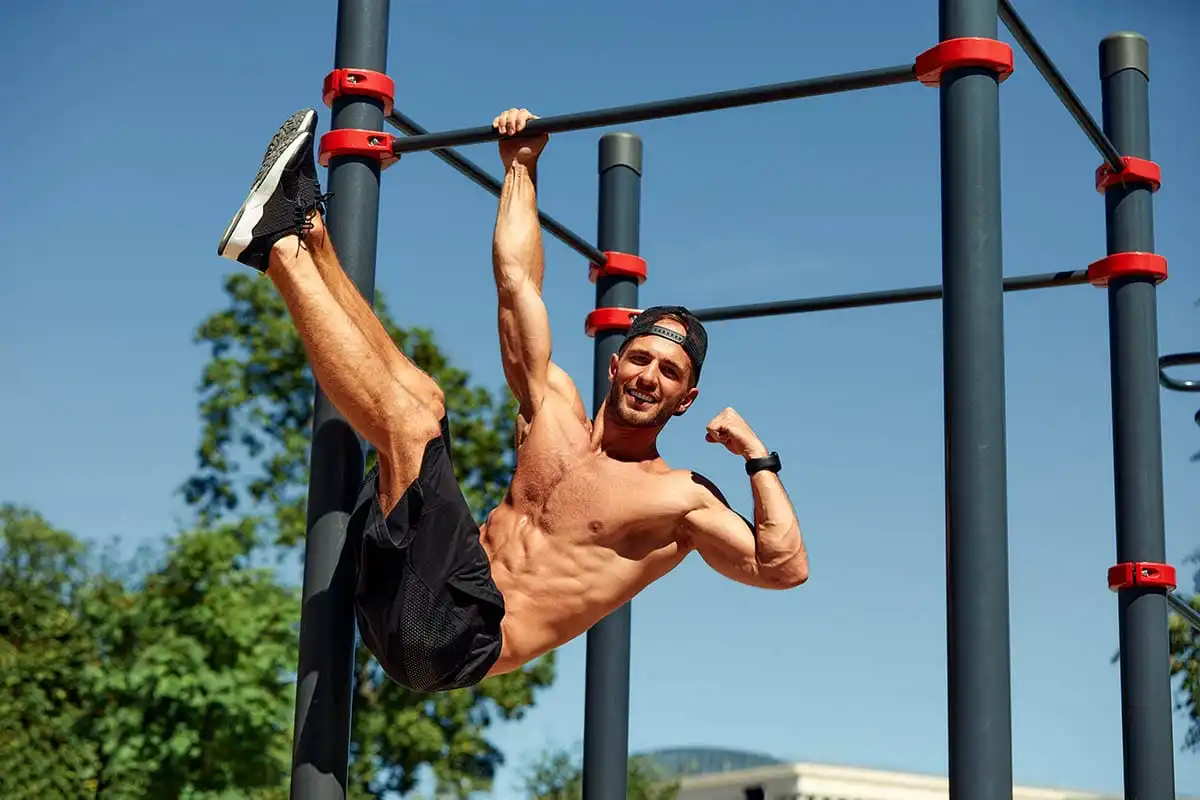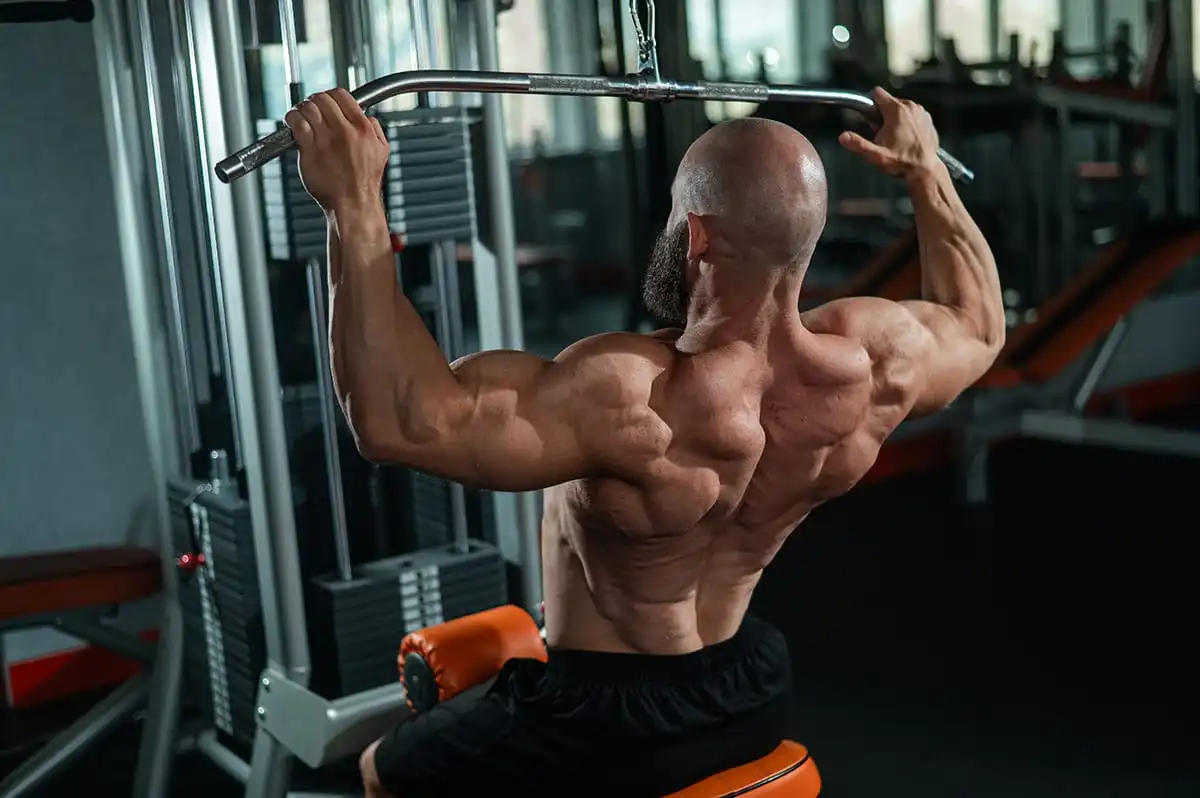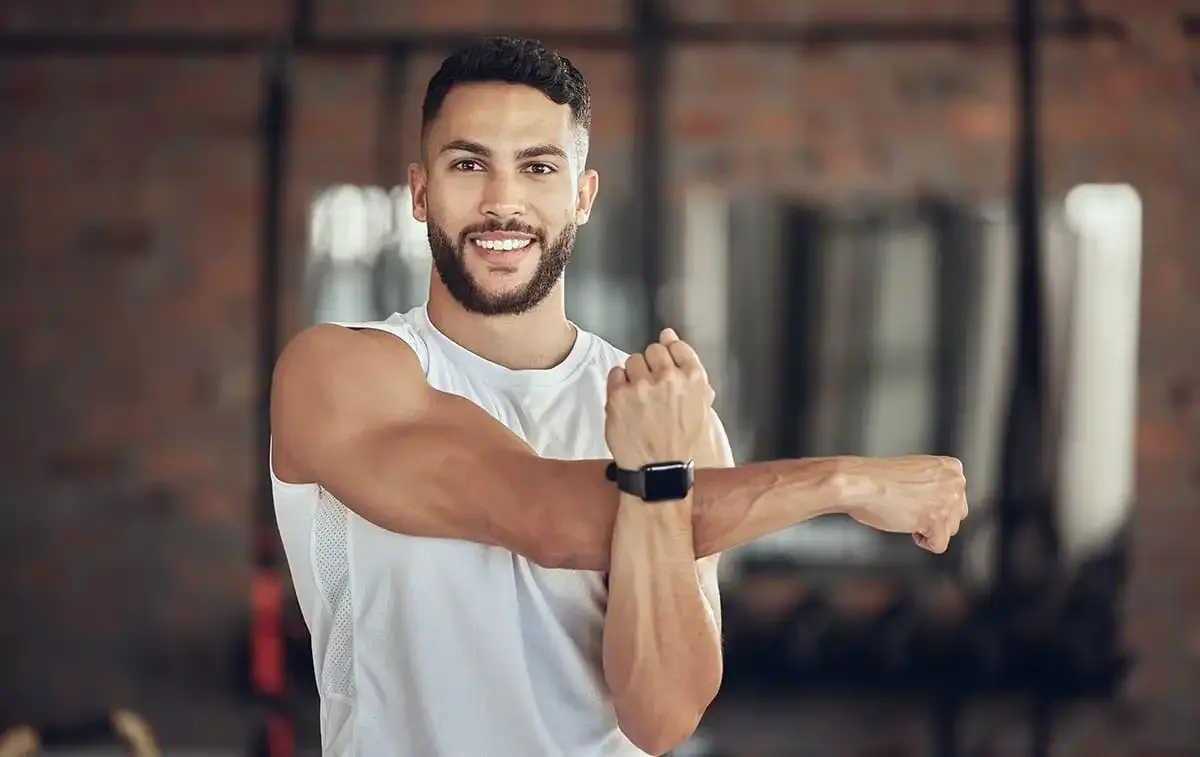Stiff Leg Deadlift vs. RDL: Which is Better for Legs?
Learn about the differences in the stiff leg deadlift vs. RDL. Find out which of these deadlift variations suits your training goals.
The stiff leg deadlift vs. RDL are similar moves but not quite the same.
These moves work the same leg and glute muscles and use the same equipment. So what are the small differences that make stiff leg deadlifts vs. RDLs different exercises?
Let’s get to know how these two exercises work your body. Which muscles do you use during stiff leg deadlifts and RDLs? We’ll see how the muscular activation in each move is different.
You’ll also get a how-to snapshot on how to master each of these moves.
This guide should help you decide which move is best for you to add to your training routine. We’ll take some of the pros and cons of each exercise into consideration so you can decide whether one move is right for you. Perhaps there’s room for both (or neither!) in your routine.
Time to see the stiff leg deadlift vs. RDL breakdown.
What are stiff leg deadlifts?
The stiff leg deadlift (SLDL) has a few key traits:
- Rep starts from the floor
- Strength focused
- More like a conventional deadlift
- Needs more range of motion in the lower back and hamstrings
What are Romanian deadlifts?
RDLs on the other hand, are slightly different:
- Rep starts in the air, with your barbell at hip height.
- Hypertrophy focused
- More different than a conventional deadlift
- Barbell doesn’t touch the ground on your descent
- Needs less range of motion in the low back and hamstrings
What do stiff leg deadlifts vs. Romanian deadlifts have in common?
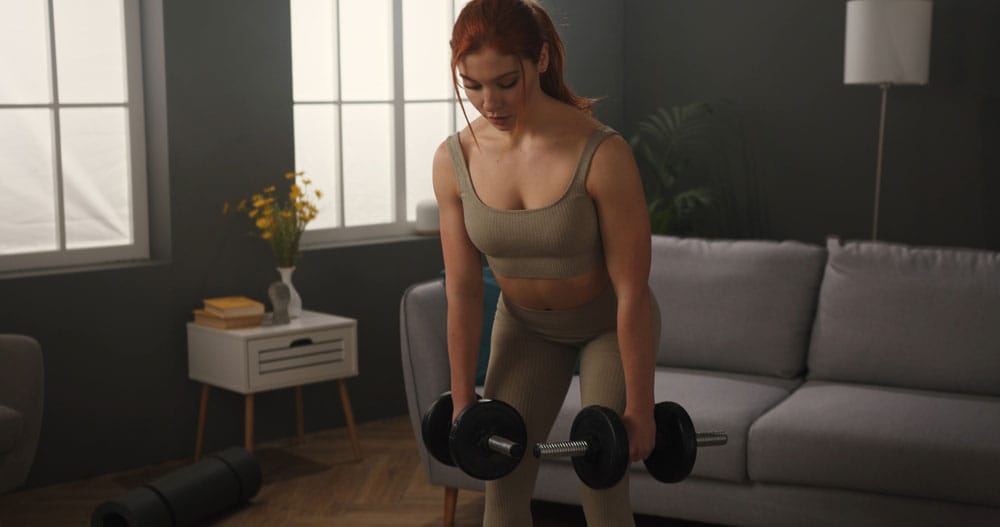
- Both variations on a conventional deadlift
- Both use a slight knee bend
- Both variations can be done with a barbell, kettlebell, or dumbbells
Stiff Leg Deadlift vs. RDL— Muscles Worked
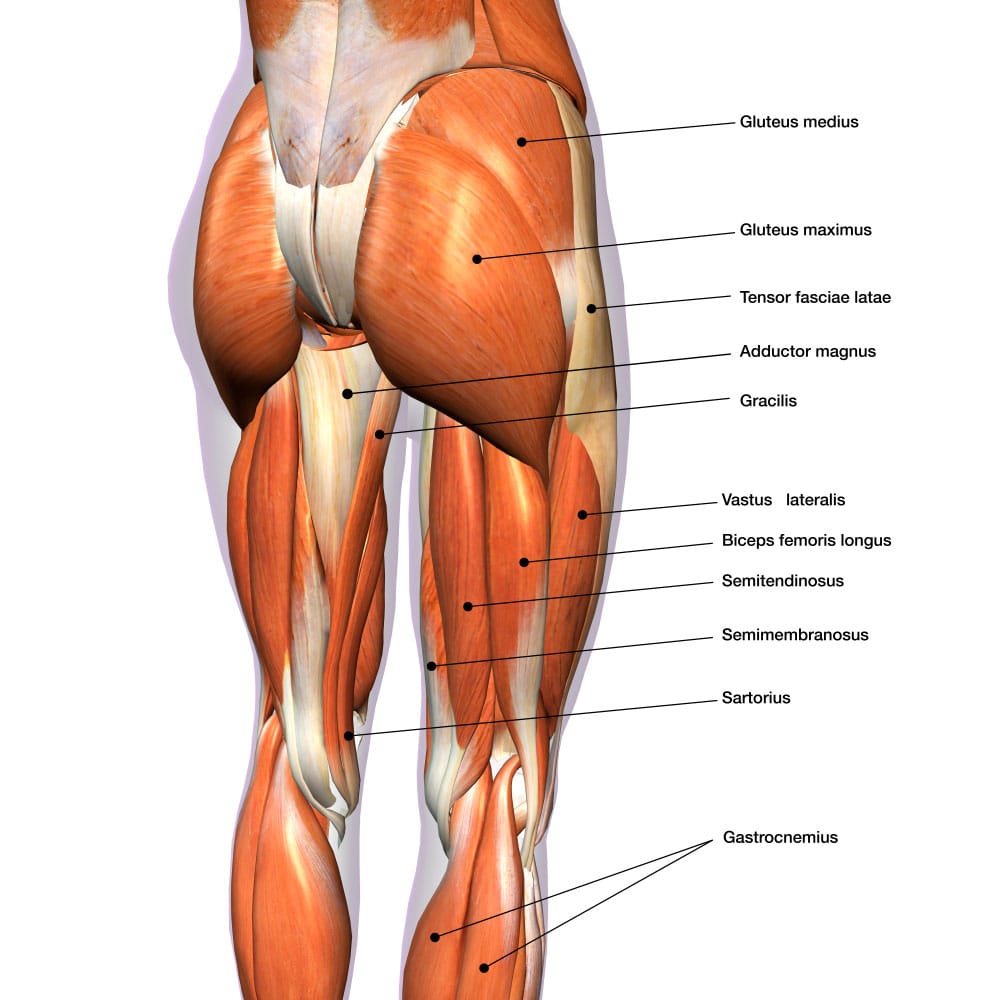
These exercises work the same muscles but with slightly different activation patterns. The muscles worked include:
Glutes
The gluteus maximus, medius, and minimus help you extend your hips, keep your pelvis stable and perform daily movements like walking or squatting down to pick things up.
Although any variation of deadlift should give you a glute workout, the RDL and stiff leg variations are more centred on building your butt shape than a conventional deadlift.
Hamstrings
The muscles at the backs of your thighs, the hamstrings, help to extend your hips and flex your knees. You use these for everyday activities like walking upstairs, yet many of us don’t focus on maintaining strong or flexible hamstrings.
Deadlifting is one of the best moves you can do to support your hamstring health.
Low Back
The lower back muscles, particularly the Erector spinae help you to keep a straight spine. One of the biggest mistakes new lifters make in their deadlifts is hinging through the waist rather than the hips.
A strong and straight low back helps you mitigate this problem and hinge properly from your hips.
Core
The abdominal muscles of the core stabilize your body and help with internal processes like digestion. Keeping your abdominal muscles strong and engaged throughout your deadlifts helps you stay stable and connects your lower body muscles to your arms which hold your weight.
Strong abs also help you maintain good posture with a straight spine.
Trapezius
The trapezius muscles of your upper back help your head and shoulders to move. These muscles go to work to support you while holding your bar in a deadlift.
Hip Flexors
The hip flexor muscles bring your legs up and towards your body. Because you need to hinge in a deadlift, the hip flexor muscles go to work making sure you have the proper hip mobility to send your butt behind you to drop it low for a good lift.
How to do a stiff leg deadlift
- Set-Up: Set up a heavy barbell and place it in front of you on the floor. Keep your feet hip-width apart.
- Stiff Leg Deadlift: Bend over and grasp your barbell with an overhand grip. The hands should be just outside your shins. Keep a neutral spine and engage your core and back muscles. Slowly and with control, pick your barbell up off the ground.
- Reverse: Pause for a moment at the top of the movement, then slowly lower your barbell back to the starting position to complete one rep.
- Reps: 3 sets of 3-8 heavy reps. Stiff leg deadlifts typically use 40-70% of a lifter’s back squat weight. Since this is typically a strength move, more weight and fewer reps is the recommended lifting scheme.
How to do a Romanian deadlift
- Set-Up: Stand holding your loaded barbell with an overhand grip. Keep your hands in front of your thighs.
- Romanian Deadlift: Engage your back and core muscles keeping a neutral spine. Hinge from your hips, bending your knees slightly as you send the hips straight back and your barbell downward. The bar should come down to in front of your shins, not all the way to the ground.
- Reverse: Hold briefly, then drive through your heels to bring the bar back up, extending your hips and assuming the starting position.
- Reps: Use a medium to heavy weight for 3-5 sets of 8-12 reps.
Who should do the stiff leg deadlift vs. RDL?
Both these deadlift variations have their respective benefits. Let’s see in what cases each move is best.
Flexibility
If you’re looking to increase your flexibility, the stiff leg deadlift is the better option for you. Because this move requires you to touch the barbell to the ground, you are working with a greater range of motion than in an RDL.
If you struggle with hip mobility or have hip pain in other exercises like squats
Strength
On the other hand, if building your glute and hamstring strength is your primary goal, try a Romanian deadlift.
RDLs don’t come all the way to the ground, so your barbell stays suspended between reps. This gives you more of a time under tension workout, so your muscles get less of a release during each set.
That extra tension can push your muscles to strengthen more efficiently.
Hypertrophy
Hypertrophy, aka muscle growth, is a type of training that usually works with higher reps and medium-heavy weight.
Since you’re carrying the load for longer in an RDL, you may want to go slightly lower with your weight than you would with the stiff leg but use higher reps.
This is an efficient way to get your muscles to grow. If you like aesthetic workouts and are concerned with the size and look of your muscles, an RDL may be ideal for you.
Read more here on Maximizing Muscle Hypertrophy.
Is a conventional deadlift better than RDLs and stiff leg deadlifts?
The conventional deadlift reigns supreme as a better all-around compound lift.
If you want to strengthen and grow your legs evenly, you should be deadlifting frequently with heavy enough weights for progressive overload as part of your programming.
Where RDLs and stiff leg deadlifts come in handy is when you’re doing isolation training, working to help out muscle imbalances, improving your flexibility or certain other goals.
Think of these deadlift variations as more specialized versions of the exercise.
Conventional deadlifts are tried-and-true for a reason.
But if you want more precision in your training to work toward a goal, the benefits listed above of these respective variations are why you should consider training them as well.
Can I swap conventional deadlifts for RDLs or stiff-leg deadlifts?
The bottom line is, you should do the exercises you can stick to, perform with clean reps, and that don’t keep you up and night with anxiety.
If you don’t enjoy the conventional deadlift and dread doing it every week, it’s okay to switch things up.
For people with knee issues, both RDLs and stiff-leg deadlifts are likely going to be a more accessible option, since they don’t use as deep a knee bend as conventional deadlifts.
We recommend trying to keep at least some traditional deadlifts here and there in your leg day routine. This move is the best as a compound exercise.
Especially as a beginner, it’s an important fundamental move to master that will help you build a healthier foundation as a weightlifter.
Learn more about how these exercises stack up by reading Deadlift vs. RDL.
It’s also helpful to see the deadlift up against another foundational exercise: the squat.
We have more information on these exercises here:
- Can I do Squats and Deadlifts with Resistance Bands?
- Squats and Deadlifts Same Day
- Squat vs. Deadlift
Big picture
No matter which deadlift variation you choose, make sure you’re using an appropriate weight, lifting safely and getting proper rest afterward.
Try to eat a protein-rich snack or meal one to two hours after you exercise. You’ll reduce your hunger cravings and maximize muscle-building capacity by getting adequate rest and nutrition post-gym.
Track your progress every step of the way as you deadlift. The Flex App progresses as you do with plate tracking capabilities and auto progression.
References
Burd, N. A., Andrews, R. J., West, D. W., Little, J. P., Cochran, A. J., Hector, A. J., Cashaback, J. G., Gibala, M. J., Potvin, J. R., Baker, S. K., & Phillips, S. M. (2012). Muscle time under tension during resistance exercise stimulates differential muscle protein sub-fractional synthetic responses in men. The Journal of physiology, 590(2), 351–362. https://doi.org/10.1113/jphysiol.2011.221200
Henson B, Kadiyala B, Edens MA. Anatomy, Back, Muscles. [Updated 2023 Aug 14]. In: StatPearls [Internet]. Treasure Island (FL): StatPearls Publishing; 2024 Jan-. Available from: https://www.ncbi.nlm.nih.gov/books/NBK537074/
Krzysztofik, M., Wilk, M., Wojdała, G., & Gołaś, A. (2019). Maximizing Muscle Hypertrophy: A Systematic Review of Advanced Resistance Training Techniques and Methods. International journal of environmental research and public health, 16(24), 4897. https://doi.org/10.3390/ijerph16244897
Ourieff J, Scheckel B, Agarwal A. Anatomy, Back, Trapezius. [Updated 2023 Mar 11]. In: StatPearls [Internet]. Treasure Island (FL): StatPearls Publishing; 2024 Jan-. Available from: https://www.ncbi.nlm.nih.gov/books/NBK518994/
Related articles
How to Start Calisthenics: A Guide to Bodyweight Fitness
6-Day Gym Workout Schedule: Maximize Your Fitness
2-Day Split Workout: Your Guide to Efficient Gains


Get fit with Flex
Build muscle & lose weight fast for free.
Available on iPhone + Apple Watch
